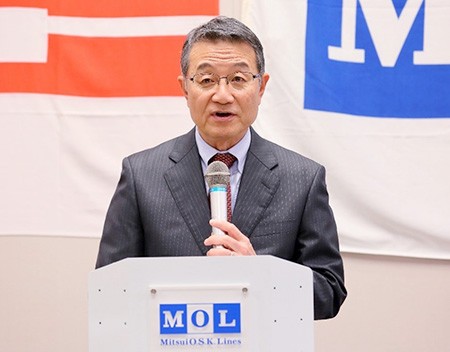The Japan Shipowners’ Association (JSA) is pushing for the development of a hydrogen-powered 21,000TEU container ship, as Japan becomes the second country after the UK to propose a net-zero emission target for the shipping industry by 2050.
JSA president Junichiro Ikeda, concurrently Mitsui OSK Lines’ chairman, stated that Japan, being the third-largest ship-owning nation, needs to play a leading role in the net-zero emissions achievements.
In 2020, the Japanese Ministry of Land, Infrastructure, Transport and Tourism and the shipping industry formulated a schedule for the deployment of emission-free ships. Accordingly, ships fueled by hydrogen and ammonia will be piloted on domestic Japanese routes in 2026, with the aim of extending such fuel usage to ocean-going ships in 2028.
The 21,000TEU ship is one of four conceptual ship designs to achieve mid to long-term decarbonisation goals. These designs are intended to be fueled by hydrogen, ammonia, LNG and wind energy. The 21,000TEU ship is 399.9 metres long, 61.5 metres wide and has a depth of 33 metres. The vessel can travel at 22.5 knots, will have 1,100 reefer sockets and is designed to carry 30,000 cubic metres of liquid hydrogen fuel.
Hydrogen-fueled ships have zero carbon dioxide emissions, which is very attractive for achieving zero emissions. Hydrogen has been widely used as a booster fuel for rockets, and land-based applications have been gradually expanded with the addition of hydrogen filling stations since fuel cell vehicles entered the Japanese market in 2014.
JSA estimates that on average, about 100 ships will need to be replaced each year starting from 2025, requiring an annual investment of about US$10 billion until 2050.
Martina Li
Asia Correspondent







